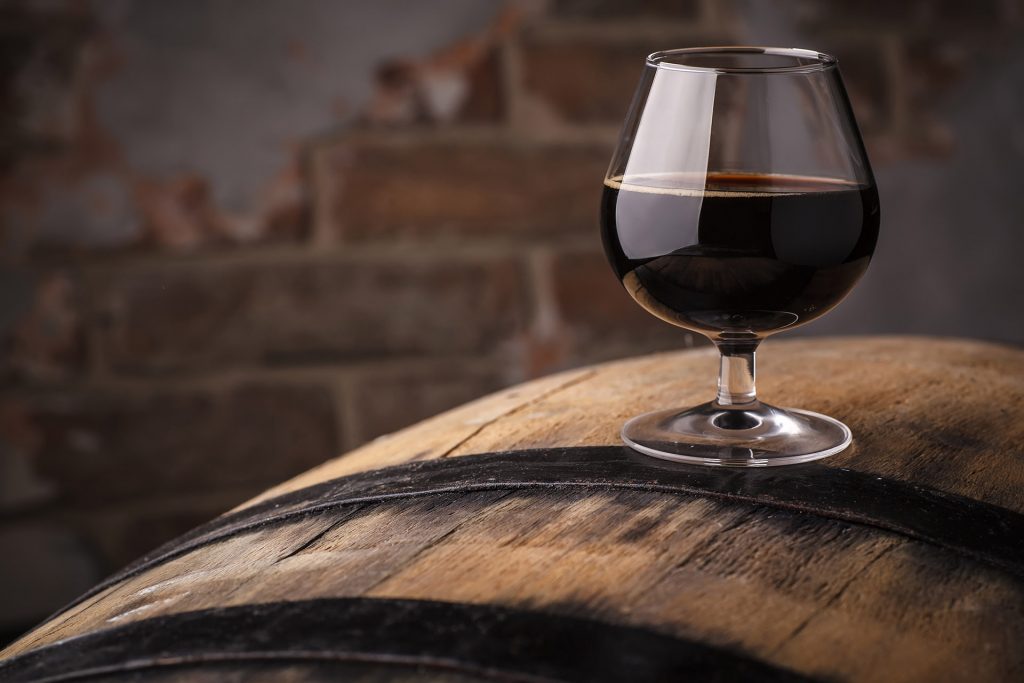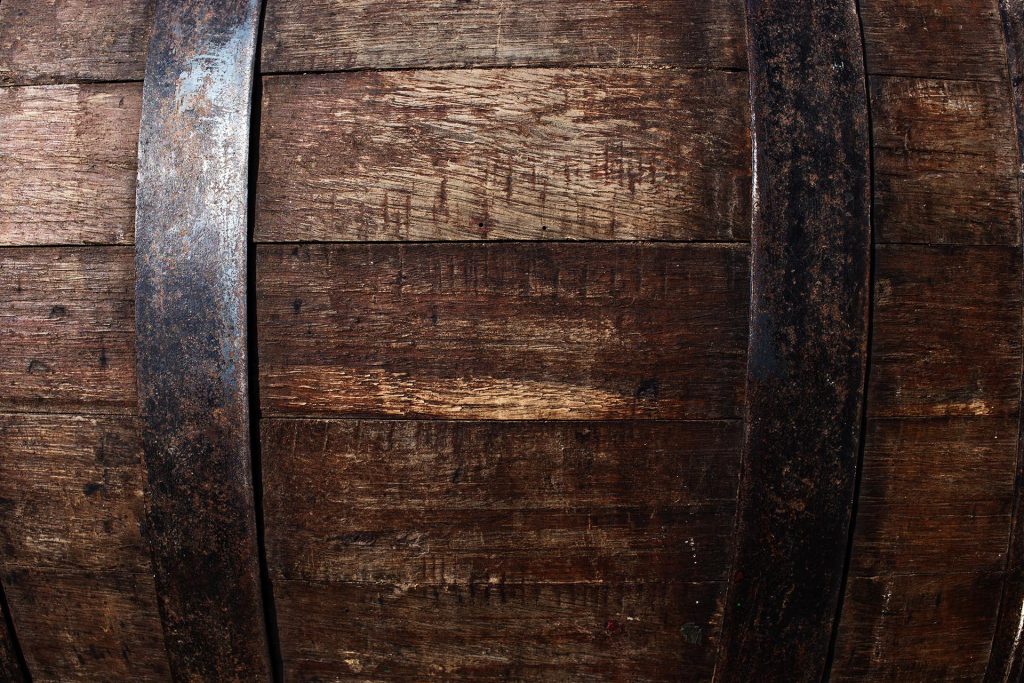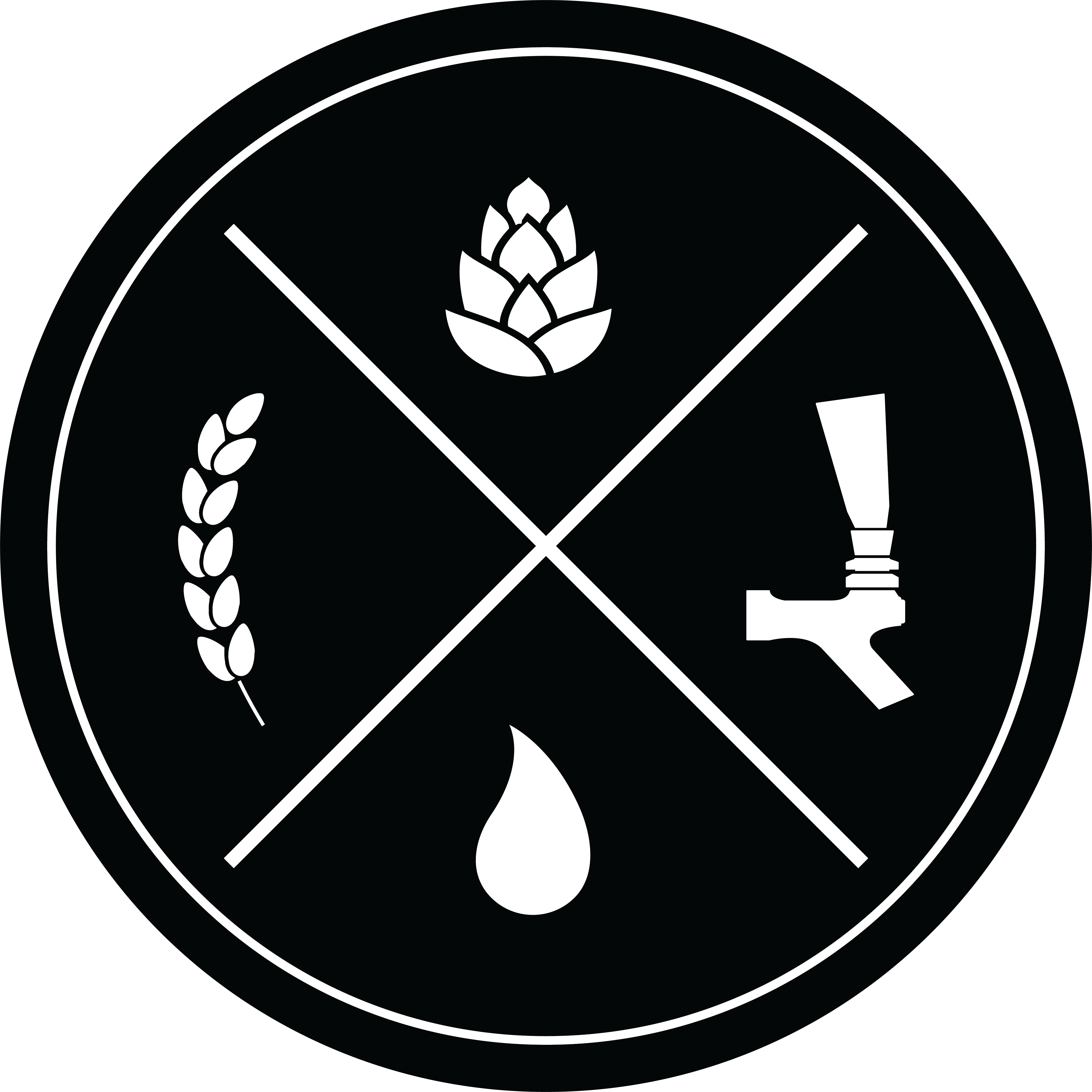
Imagine yourself sitting outside by a fire on a cool, brisk evening sipping a beer. For me, the perfect beer for such an evening would be a bourbon barrel aged stout. The months, and sometimes years that the beer ages in that barrel are truly a testament to the patience of the brewer. For a brief, very brief period I contemplated buying a barrel and trying to replicate some of my favorites at home. Unfortunately, I am a very impatient brewer and I really do not have a temperature-controlled space to store a barrel of beer. Seriously, why wait several months for something when I can find a shortcut?
Your favorite local brewery has painstakingly brewed their beer and fermented it before transferring it to a used bourbon barrel, more than likely several barrels. It then sits and soaks in all the glorious bourbon flavoring for about nine months to a year. All the while the brewers periodically check and taste the beer to see when it has aged to their satisfaction. The question is now, how can we replicate that taste at home with limited space and time?

Before we begin, we need to decide what flavors are we trying to achieve? Do we want to strictly get the bourbon flavor to accent our base beer? Or are we looking for the bourbon and the wood flavors to meld with our base beer? There are a variety of methods to achieve your desired goal. Some require a little extra time and space, while others add very little or no time to the process before you can sit in front of a fire and sip your masterpiece.
Let’s start with the ambitious option. There are some distilleries that use small five gallon barrels in which they age their bourbon, and you can find some of those used barrels for sale, anywhere from around $100 to $175. It is important to get a recently “dumped” barrel as the oak staves are still wet and the barrel will hold your precious beer inside, vice leaking out all over your storage room. Since the majority of Homebrewers brew five gallon batches, these are perfect for the overachievers among us. The smaller size of the barrel shortens the aging process as there is a higher percentage of the beer in contact with the barrel. You need to taste it as it ages to be sure that you know when it is done. It is much easier to let it sit for a little while longer than it is to get the flavor out once it is there. This option will add a month or more to your process, so plan accordingly.

The next option is for those that want some bourbon flavor as well as some additional flavors from the wood itself. You can buy oak staves, spirals, cubes, chips, or even powder, of course to be bourbon accurate, I should specify that you look for American Oak. Since we are Homebrewers and the TTB is not looking over our shoulder to be sure that we are using the correct oak, we can use whatever we want. Simply soak your oak in bourbon for a few days to a week to allow the oak to soak up the bourbon. I usually add enough bourbon to a quart jar to cover the oak, the amount will vary depending on your choice of oak. After the oak has soaked in the bourbon, drain off the bourbon and add the oak to your fermented beer in your fermenter. Alternatively, you can add the oak and the bourbon to your fermenter to get a stronger bourbon flavor. How long you leave the oak in your fermenter is based solely on your own personal taste. If you leave the wood too long in your fermenter it will overpower all of the other flavors and aromas in your finished beer. I suggest checking it after a week to see if the flavor and aroma is where you want it.
The last option is the ultimate “cheat”. Denny Conn, a Governing Committee member of the American Homebrewers Association, has subscribed to the idea of adding the bourbon at bottling or kegging. His opinion is based on what we discussed earlier. What flavor or aromas are we trying to achieve? If we simply want bourbon flavor then why not add it at the end? There is no extra time or space needed. If you read the blogs and forums, watch YouTube, listen to podcasts, or talk to your homebrewing friends, you will likely get a hundred different opinions on the amount of bourbon to add. Just like the aging in a barrel or on oak, once it is in there, you cannot take it out.
One easy way, albeit a bit longer method of deciding how much bourbon to add is to brew a batch of the base beer and try adding different amounts of bourbon to a pint of your beer. Once you are satisfied with the bourbon levels in that serving, it goes back to elementary school math, although you may want to check your math sober. In a standard five gallon batch there are approximately 53 twelve ounce servings of beer, depending on how closely you hit your target volumes. Simply multiply the amount of bourbon you added to your beer to get your desired flavor by 53. For example, if your taste test revealed that you prefer .5 ozs of bourbon per serving, multiply 53 times .5 and you will get 26.5ozs of bourbon to add to your beer at bottling or kegging. Now you know that when you brew the base beer again, you will add the bourbon directly to your bottling bucket or your keg when you transfer your beer.
The following is a beer that I brewed last year that turned out excellent and would be a great addition to your lineup for the upcoming cold winter months. Due to my aforementioned impatience, I added one cup, eight ozs of bourbon and two ozs of pure vanilla extract at kegging. I went with eight ozs of bourbon because I wanted some subtle bourbon character but I did not want it to be at the forefront of the flavor.
FERMENTABLES-Mash at 152 for 60 minutes
HOPS
2 ozs of Mandarina Bavaria – 60 minute boil addition
OTHER ADDITIONS
Whirlfloc Tablet – 15 minute boil addition
Cacao Nibs – 8 ozs in Secondary for 2 weeks
YEAST
OG : 1.130 FG : 1.043
 Now all that is left to do is light a fire, lean back, stare at the stars and sip your brew.
Now all that is left to do is light a fire, lean back, stare at the stars and sip your brew.

